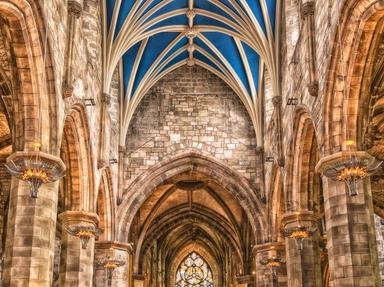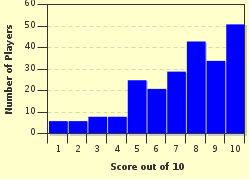Quiz Answer Key and Fun Facts
1. The first church we are visiting is Christ Church Cathedral in Oxford. It was founded by the city's patron saint Frideswide. We are going to visit her holy relics. Why is this church called a cathedral?
2. Our next stop is in London. This church contains a circular nave, which is called "the Round," as well as ten knightly effigies.
3. Not far from London is a church that was founded in 602 when St. Augustine arrived in England by orders of the pope to convert the Anglo-Saxons to Christianity. Rumor has it that Augustine wasn't very happy about being sent to such an unholy place, but he followed the pope's orders and the church is now the governing church of Christians in England.
4. I have been looking forward to visiting this site! Built by William the Conqueror to atone for the Battle of Hastings, the church is dedicated to St. Martin. Supposedly the altar of the church was built over the very place where King Harold was shot with an arrow in the eye.
5. May I please be forgiven for my wicked thoughts? I am so excited about visiting this next location, however, not for the abbey, but for the hot springs, so I can soak my tired, aching body. This pilgrimage business is hard on a person!
6. On the way to our next stop, we are passing some huge blocks of stone. I am too afraid to look at them, however, because it is said they were put there by the devil himself. I am so relieved to visit the tomb and relics of St. Osmund; I hope I can receive an extra special blessing there.
7. I am looking forward to visiting this site! Legend says the first church at Glastonbury Abbey was built by the boy Jesus and a tin merchant, who came to Somerset, England because of the rich tin mines. Who was this tin merchant, who also donated his own tomb for the burial of Jesus after the crucifixion?
8. We have to wait for low tide (finally some rest!), so that we can walk across the path to the monastery built in honor of the Archangel on this island in Cornwall.
9. From Cornwall we are boarding a boat that will take our party of pilgrims to London. I am afraid of being seasick, but I am looking forward to viewing the sacred relics of Edward the Confessor, and the coronation chair that dates back to the time of William the Conqueror.
10. The last stop on our sacred pilgrimage, is thankfully, close to home. We wish to visit the relics of St. Birinus for one final blessing. Here Birinus converted the pagan West Saxons to Christianity and became the first bishop.
Source: Author
ponycargirl
This quiz was reviewed by FunTrivia editor
trident before going online.
Any errors found in FunTrivia content are routinely corrected through our feedback system.

